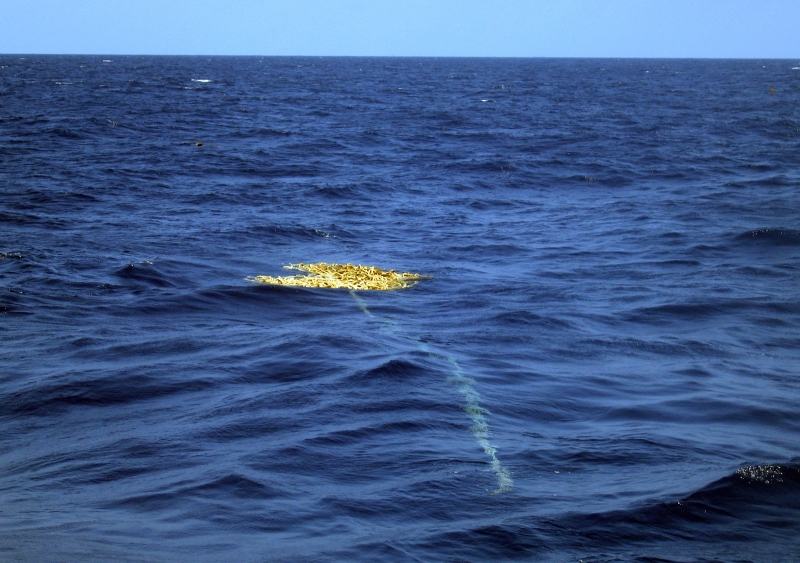By: Carey Morishige, Pacific Islands Regional Coordinator, NOAA Marine Debris Program
Over the last several years, the infamous “Great Pacific Garbage Patch” has gained popularity. Whether described as an island of trash or a soup of plastic, it has haunted the dreams of ocean conservationists. As I described in my last post, there are a lot of misconceptions about the so-called garbage patch, among them the size and amount of marine debris entrained in this area. To understand the many unknowns about the ‘garbage patch,’ you must first understand what the area really is. In a nutshell, it is a large area of marine debris concentration caused by the clockwise movement of the surface of the ocean. Sailors and fishermen have known of this area for decades—to them it is the North Pacific Subtropical High, a high pressure zone typically avoided by sailors.
One of the common questions we receive is: Why can’t we go out and clean this area up? Sounds easy and simple—if only it was! There are many factors that must be taken into account, such as the fact that these areas of concentrated marine debris move and change throughout the year and many of these areas also have abundant sea life, much of which is microscopic.
Let’s crunch some quick and dirty numbers on the cost of a cleanup:
Suppose we were to attempt to clean up less than 1% of the North Pacific Ocean (a 3-degree swath between 30° and 35°N and 150° to 180°W), which would be approximately 1,000,000 km2. Assume we hired a boat with an 18 ft (5.5 m) beam and surveyed the area within 100 m off of each side of the ship. If the ship traveled at 11 knots (20 km/hour), and surveyed during daylight hours (approximately 10 hours a day), it would take 67 ships one year to cover that area! At a cost of $5,000-20,000/day, it would cost between $122M and $489M for the year. That’s a lot of money—and that’s only for boat time. It doesn’t include equipment or labor costs (keep in mind that not all debris items can be scooped up with a net).

The ultimate solution to the global problem of marine debris is not in clean up and removal (we can do that every day for the rest of our lives). The solution lies in prevention—stopping marine debris at the source; preventing trash from getting into our oceans and waterways in the first place!
For more information on the garbage patch and ways that you can help prevent marine debris, check out the NOAA Marine Debris Program website.
